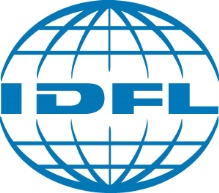Since the US textile market is currently worth nearly $252 billion, facilities manufacturing fabric products have a lot of competition.
In today’s increasingly sustainability-conscious market, businesses are expected to understand and improve their environmental impact, not just in products, but throughout operations. This is where the Higg Facility Environmental Module (FEM) plays a crucial role.
What Is Higg FEM?
Higg FEM stands for Higg Facility Environmental Module, a globally recognized environmental management standard developed to help facilities—whether manufacturers, brands, or retailers—assess their environmental performance. It offers deep insight into environmental strengths and areas for improvement, allowing organizations to build effective strategies for reducing their environmental footprint. Rather than being a pass-or-fail audit, Higg FEM is a self-assessment and verification tool. Facilities begin by completing an in-depth self-assessment, which is then verified by an approved third party, such as IDFL. This verification ensures accuracy and builds trust in the reported data.
It looks into seven core factors that contribute to sustainability, including:
-
- The environmental management system of a company
- How much electrical and gas energy does the facility use
- Greenhouse gas emissions
- The facility’s water use
- The amount of wastewater the facility produces
- General waste produced by the manufacturer
- Chemical use and management
How Does the Higg FEM Work?
There is a three-level question structure for testing each of these factors:
-
- Level One (Foundational) – Awareness and understanding of systems
-
- Level Two (Progressive) – Setting goals and tracking the progress you’ve made
-
- Level Three (Aspirational) – Leading environmental practices
A comprehensive Higg FEM score is based on 100 possible points. Each section tests one of seven factors, meaning that every section is worth 14.3% of the overall score.
These sections are weighted equally.
Level 1 is worth 25% of the points in a section. Level 2 is worth 50% of the points, and Level 3 is worth the remaining 25% of the points.
The levels are therefore not weighted equally. Level 2 carries the most weight.
Higg FEM Benefits
There are several ways that the Higg FEM can help companies in the textile industry:
- Benchmarking environmental performance across global industry peers
- Identifying operational weaknesses and building sustainability roadmaps
- Demonstrating transparency and accountability to business partners, brands, and consumers
- Aligning with sustainability expectations from governments, investors, and customers
IDFL’s Role with Higg FEM
IDFL is an approved Higg FEM verifier and shares in Cascale’s (formerly the Sustainable Apparel Coalition) vision: creating an industry that gives more than it takes—to the planet and its people. Through our verification services, we’ve helped facilities around the world accurately measure and communicate their environmental performance. We support Cascale’s mission to transform business through collaborative tools and data-driven sustainability leadership. Learn more at Cascale.org.
Get Started with Verified Environmental Performance
If your facility is ready to take a data-driven approach to environmental responsibility, Higg FEM is the right place to start. IDFL can support you through the verification process and help ensure your assessment reflects your sustainability commitment accurately and credibly. Contact us today to begin your Higg FEM verification and join the movement toward meaningful environmental progress.

